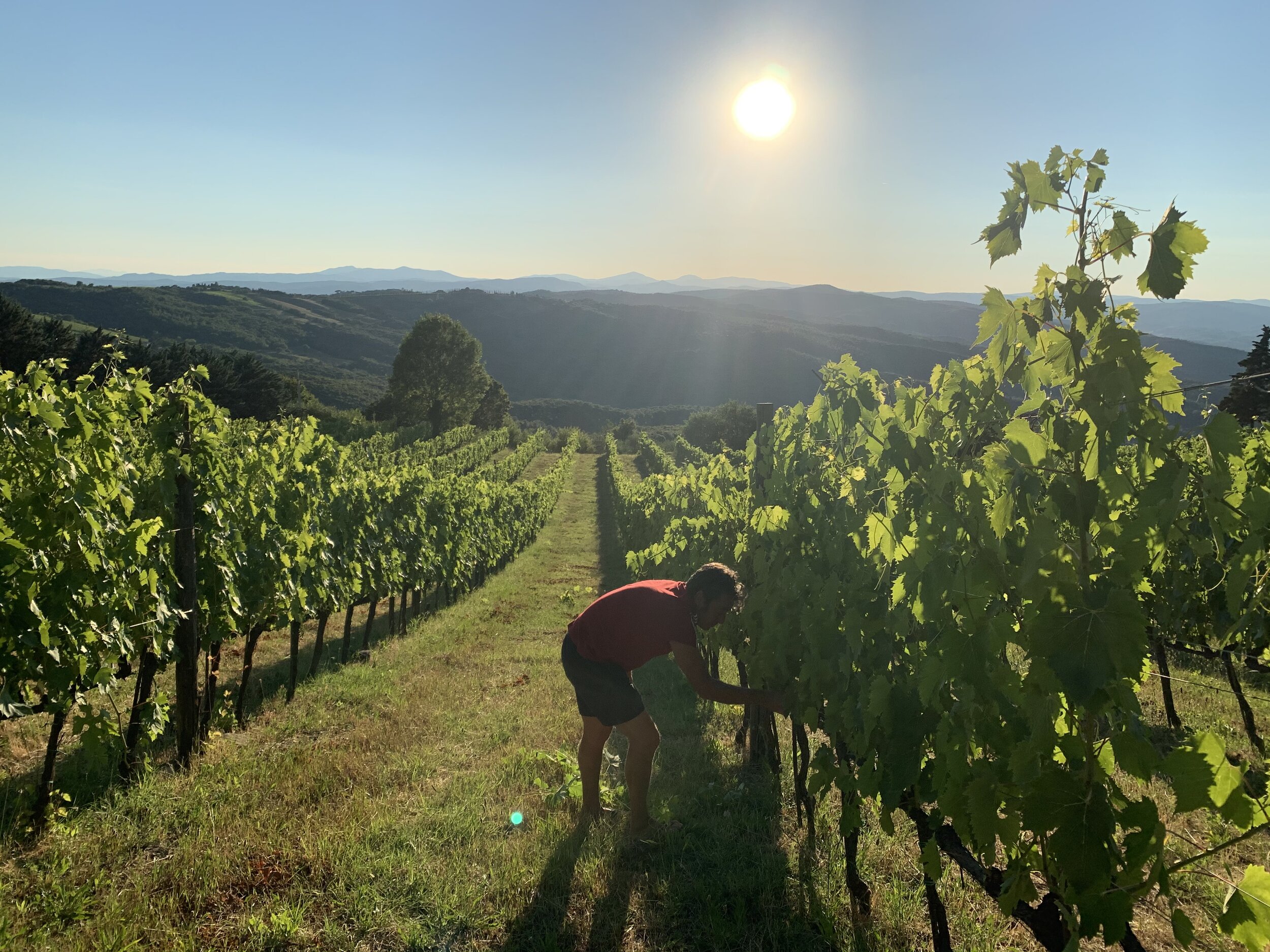Brunello 2016 ; 1.500 decisions in a bottle
Anyone following just a handful of Montalcino producers on Instagram will know that we were all bottling like mad at the end of July; 2015 Riserva and 2016 … in spite of, or rather to take advantage of, the high temperatures. Why bottle during the summer months? We do this in order to reduce potential oxidation of the wines since oxygen dissolves in wine at lower temperatures. It is also vital to bottle as far away as possible from harvest and fermentation when the cellar is full of stray yeasts and potential sources of future problems. As my cellarwoman ominously and frequently points out, harvest 2020 will be upon us before we know it. We need to move wine out of the barrels in the aging cellar in order to free them up for the 2020 vintage and start preparing the cellar and ourselves for The Pick.
If the above were not motivation enough, according to the DOCG regulations, Brunello must spend a minimum of 4 months bottle aging before release in January while Riserva must spent six months. Bottling in summer means that the wines are ready to be sent out into the world when they can be commercially released, on the fifth January after harvest.
Gabriele Gorelli an indigenous rising star here in Montalcino, estimates that in Montalcino 1.500 decisions are made from site selection to bottling. He has consciously adapted Stephen Skelton’s observation from his book, Viticulture , a beloved text for many students of wine:
“Someone once worked out that there are 3,000 separate decisions that are taken from site selection to bottle, any one of which could change the character and quality of the wine in question”
In Montalcino, due to the restrictions and obligation of the D.O.C.G., many decisions are made for us, hence the halfing of the number of choices. For example where we plant must be within the circumscribed area of Montalcino. What we plant has to be 100% Sangiovese for Brunello, our yield in grapes and conversion to juice are similarly specified and on it goes, right down to the kind of closure, the minimum acidity and the bottle formats.
When I heard of this theory it seemed a fascinating way to convey the constant thought that goes into making wine. Rather like parenting a small baby, we are perpetually weighing up choices, second-guessing patterns and reactions, trying to predict and offset events. I mentioned the theory to Marco who was initially skeptical but when we started to talk about his daily even hourly decisions and adaptations, vineyard vigilance, intervention and so on, we came to the conclusion that 1.500 is a very reasonable figure, if anything on the low side... even in Montalcino.
Choosing the pick date is critical; think of the 2013 harvest where picking before or after 4th October was a watershed for quality. Once the grapes are in the cellar overseeing the fermentation, deciding how many pump-overs to do and when is a whole other chapter, and so on and so on. My heart is beginning to race just thinking of it.
Here we have 12.692 bottles of 2016 Brunello, 250 Magnums and 50 Double Magnums, lying quietly in their cages. The decision-making on our side is over. All we have to do is take good care of them until release in 2021 and then transfer the responsibility to our clients and distributors. Please store carefully, open lovingly, serve at the right temperature with deserving guests and delicious dishes.
Do the right thing my friends, we’re trusting you to take care of these receptacles of five years of thoughtful (innumerable) decisions.
With thanks to Rodrigo Sepulveda for introducing me to this marvellous theory.



